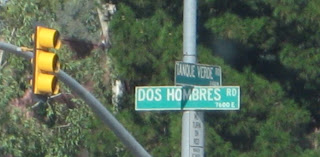 I hope everyone reading this blog has at one time in their life experienced the joy of striking a pinata open, and enjoying all the goodness it delivers in the form of delicious candies. This blog is dedicated to the wonderful Mexican tradition of the pinata.
I hope everyone reading this blog has at one time in their life experienced the joy of striking a pinata open, and enjoying all the goodness it delivers in the form of delicious candies. This blog is dedicated to the wonderful Mexican tradition of the pinata.As I started doing some research about the origins of the pinata, I couldn't come up with a straight answer. Some say it came from China, others say Italy and some say it came from the Aztecs. What I did find that was agreed upon was that the word "pinata" comes from the Italian word "pignatta," a pine-cone-shaped clay pot.
I also learned another interesting fact. The Mexican people often used the pinata as a religious teaching tool. The ways it was used seem to vary a bit, but here were the most interesting ones I found:
 The seven pointed pinata has seven points representing the seven deadly sins (envy, sloth, gluttony, greed, lust, wrath and pride).
The seven pointed pinata has seven points representing the seven deadly sins (envy, sloth, gluttony, greed, lust, wrath and pride). - Some explain the beautiful colors of the pinata to represent the false beauty of Satan, and the candies inside are the tempations of the world. The stick is then used as to destroy the "evil" represented in the pinata.
- In the above scenario, the blindfolded person represents "blind faith." Photo thanks to MaLuMaPe, Flickr.com
- Others say the stick represents love, and only love (Jesus) can destroy sin.
- In the above scenario, the candies represent the forgiveness of sins, and new life.
Pinatas are generally used at celebrations like Christmas or birthday parties, not merely for religious illustrations. They can be any design or size you want them to be.
If that's the case, why not make your own pinata? It can be a fun family project, and a great activity at any party. Click here for a "how to" Web Site with instructions on how to build your own 6-point pinata. Just add your own extra point if you want to use it for the religious symbolism.
If another design is what you want, try Google.com for "pinata patterns" and browse through the results. I'm sure you'll find something perfect for your special occasion. Here is a photo I found of an Elvis pinata: Photo thanks to chotda, Flickr.com
Photo thanks to chotda, Flickr.com
The possibilities are never-ending!









 Above: Camino Seco - "Dry Way"
Above: Camino Seco - "Dry Way"